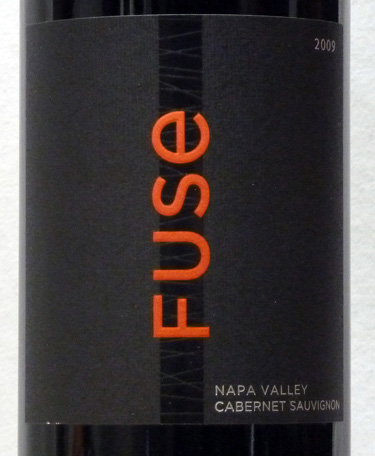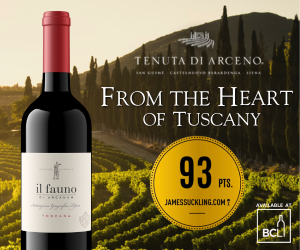Should British Columbia have a signature wine varietal?

Of course not, but some 350 attendees were not going to let a poorly chosen phrase or two get in the way of a lively debate that took place last Friday night in the bowels of the Vancouver Public Library. In defence of its UBC alumni organizers, it probably seemed like a logical question, given signature grape varieties have the appearance of being useful, especially to the confused or embattled wine drinker. In British Columbia, where just about anything goes and even worse it is tolerated, most of us in the room would likely agree the answer is somewhere in between.
In simpler times Zinfandel, Carmenère, Pinotage and Sauvignon Blanc looked as if they would put California, Chile, South Africa and New Zealand on the wine map. In fact they did, but it wasn't long before wine drinkers wanted more, in effect relegating signature varieties to the historical wine lines of each region or country.
That said, the lingering effect of even having your country associated with wine can't be all bad. Canada's international status is more likely to be relegated to hockey and maple syrup, and if the topic of wine ever comes up, which I can tell you is exceedingly rare, it is almost always about ice-wine that, frankly, no one takes too seriously.
When it comes to British Columbia, the argument for experimentation and freedom is widespread, especially among industry types. We get it. We need to try everything before we can agree on anything, but how long does it take? We have some very fine examples of Chenin Blanc and Riesling from old vines (some over 40 years old) how much longer should we continue to plant Sauvignon Blanc, which has shown little or no propensity to shine in the Okanagan?
We could run down a list of a dozen other whites that should go, or if kept as many suggest for diversity, should at least be ignored, when we talk about our best. It is the same for many reds, with the exception of Pinot Noir and Syrah, which seem destined for greatness. Certainly on the red side more work is required to finalize our best sites and grapes. It could be that a blend of red grapes will be the story, but not every one known to mankind.
Consumers love to buy and drink Cabernet Sauvignon, but the whole world cannot grow it. It's been 23 years now since we first planted red varieties in the south Okanagan. Isn't it time we made some decisions about what does best and get on with refining some of those grapes, propagating the best vines and zero in on the sites best suited to them? It's not that this isn't happening, but the speed of planting and expansion of the correct material, on the best sites, is painstakingly slow.
Again, we can all argue we need time, but do we really need more time to eliminate any thoughts of planting Pinot Noir in the heat south of McIntyre Bluff without some compelling and extenuating circumstance? Does B.C. Chardonnay require more than 30 per cent new oak for aging most years? Shouldn't we grow more Cabernet Franc and less Cabernet Sauvignon, and use the latter in blends not as a single varietal wine?
I would argue we have the potential to make electric, fresh, exciting vibrant B.C. wines, both red and white. It won't be easy to make that a signature statement, but I guess if VQA can be sold as a guarantee of quality, vibrant, food-friendly, exciting, cool-climate northern wines can be funnelled into some sort of signature for British Columbia wine producers. It is the kind of focus I believe both the yes and no sides of the debate were leaning toward.
Would sub-appellations help define us? Would more of our best plant material planted in the right spots help? Sure they would. Would a small focused export campaign work in, say, New York City, San Francisco, London, Singapore, Hong Kong, Auckland and Sydney be useful? You bet.
Would a hip little cool-climate school of viticulture and winemaking in the Okanagan help spread our story? Yes again. Would a conference that attracted leading-edge winemakers, writers and marketers to the Okanagan help put us on the map? Of course it would, but you have to start somewhere.
In the end, the reason for the debate focus on the question of a signature varietal or wine is probably that, after 40 years of growth and change in B.C., we remain but a tiny outpost on the world wine map, and there can be little debate about that.
Monte del Fra Ca del Magro Custoza Superiore 2011, Verona, Veneto, Italy
Price: $20 | Score: 90/100
UPC: 838547000050The Northern Italian equivalent of an Okanagan aromatic blend with finesse. Look for a honey, floral, peach, butter, quince, citrus and lemon-peel-scented nose to preview its crisp, juicy, creamy palate with guava, quince, lemon, green apple, pear, floral and ginger flavours. Young with fine acidity and fruit, it could use another year or two in bottle to fully spread its wings.
Cono Sur Bicicleta Gewürztraminer 2012, Region del Valle Central, Chile
Price: $11 | Score: 87/100
UPC: 7804320753904Similar to the previous edition with spicy, dried lychee, floral, orange, ginger aromas. The attack is fresh, the palate drier, with honey, dried lychee, light sausage, ginger, rose petal and apple-skin flavours with only minimal oiliness. Good viscosity and fruit intensity. Great effort and a steal at the price. Great with Indian or Thai dishes.
Farnese Primitivo 2010, Puglia, Italy
Price: $11 | Score: 86/100
UPC: 8019873924100Intense in a rustic manner with floral, black plum jam and licorice aromas. The attack is supple, with more sweet black fruit with light tannins and earthy, floral rooty licorice, black- cherry fruit. A solid, if simple, spaghetti red for mid-week. Good value.
The Wolftrap Syrah, Mourvèdre Viognier 2011, Western Cape, South Africa
Price: $15 | Score: 87/100
UPC: 746925000564Always a crowd pleaser with its smoked meat, savoury, chocolate and baked earth aromas. The Wolftrap's soft, round, warm, demeanour pulls you in to its fresh palate with cigar, chocolate, smoked meat, raisin, leather, blackberry jam, prune, medicinal flavours. The finish is rich and warm. Try this with grilled meat entrées or a sausage pizza.
Castra Rubra Pendar Red Rubin, Merlot 2009, Thracian Valley, Bulgaria
Price: $18.49 | Score: 87/100
UPC: 3800056780096Castra Rubra (red fortress) takes its name from an early Byzantine castle, found in the region of Harmanli on the Via Diagonalis, which connected Rome with Constantinople (present Istanbul). We like the earthy aromas of this peppery, black-cherry, tobacco, meaty red blend orchestrated by Michel Rolland. The attack is dry, round and rich but with somewhat chunky tannins. Good value.
Fuse Cabernet Sauvignon 2009, Napa Valley, California
Price: $40| Score: 90/100
UPC: 00752183290715There is nothing shy about this rich peppery, blackberry, cassis, floral-scented red flecked with vanilla, smoky savoury aromas. The attack is warm and spicy, with just enough acidity to hold it is own. There a dash of Syrah and Merlot here to both spice and soften the Cabernet awash in coffee, dark chocolate, blackberry, tobacco and licorice flavours. For those who want their red flush and ready to drink. Good value.
Read more: http://www.vancouversun.com/life/Signature+varietal/7943016/story.html#ixzz2NMEYhyx0

 quicksearch
quicksearch





